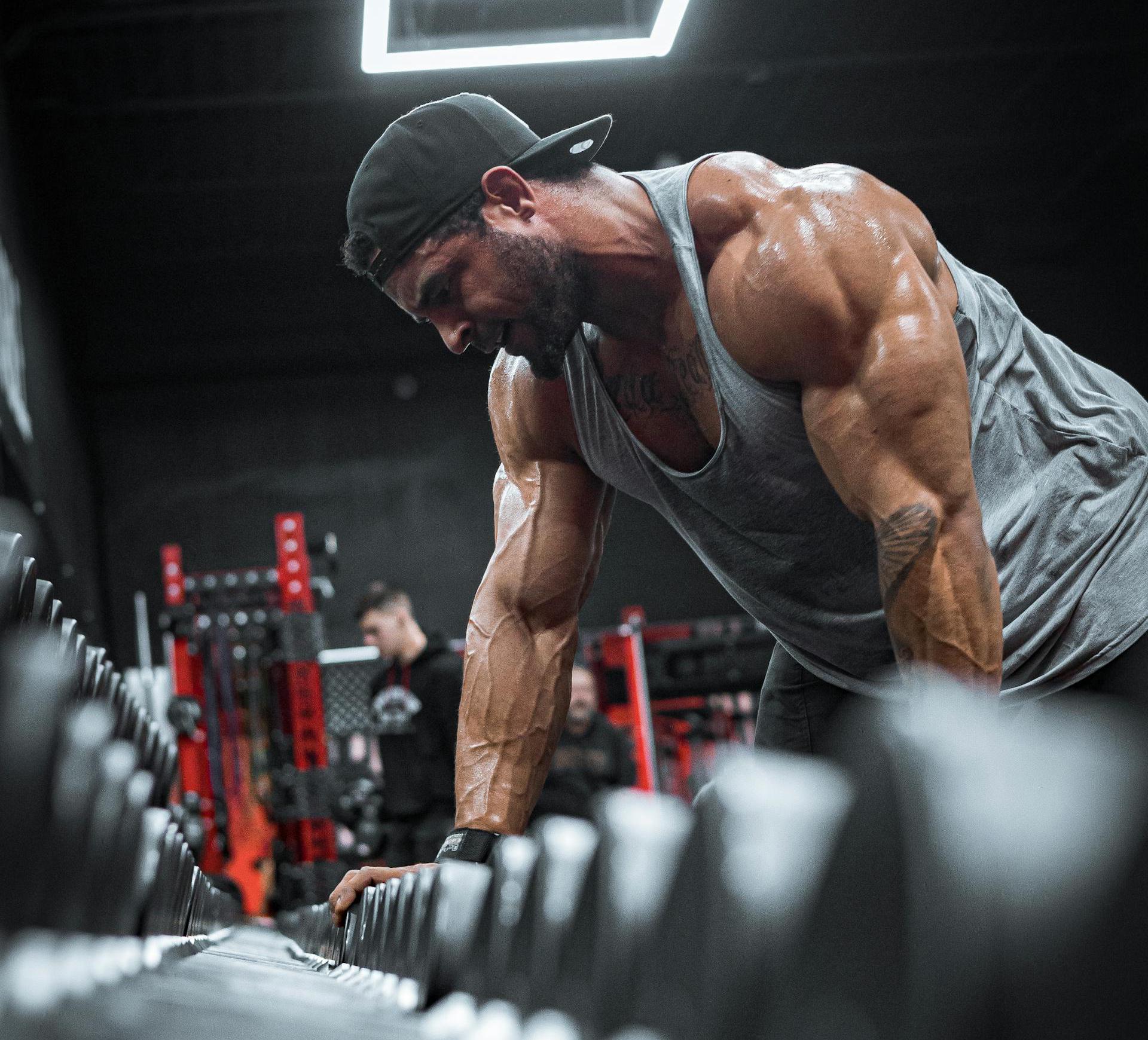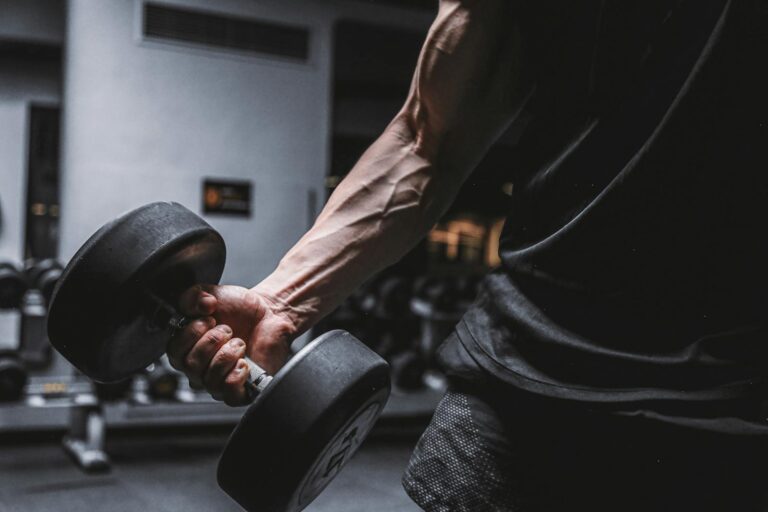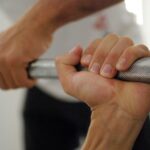Let’s be real—when was the last time you really focused on your rear delts? Not just throwing in a few half-hearted reverse flys at the end of your workout, but actually training them with the same intensity as your front delts and side delts? If you’re like most lifters, the answer is probably… never.
And I get it. Rear delts don’t get the glory. They’re not the muscle that makes your t-shirts tight or gives you that wide, 3D shoulder look immediately. But trust me—neglecting your rear delts is a huge mistake, both for aesthetics and for long-term shoulder health.
Let’s talk about why rear delts get overlooked, why that’s a problem, and, most importantly, how to fix it.
Why Rear Delts Get Ignored
They Don’t Get That “Pump” Feeling
When you hit lateral raises, your side delts blow up. When you press heavy, your front delts take over and fatigue fast. But rear delts? They’re a smaller muscle, they don’t get the same immediate pump, and they don’t fatigue as quickly—so a lot of people just don’t feel them working and assume they aren’t that important.
Front Delts Take Over Everything
If you bench press, overhead press, and do dips, your front delts are already getting a ton of work. The problem? Your rear delts are getting nothing in comparison. Over time, this creates an imbalance that makes your shoulders roll forward, giving you that hunched-over look that screams, “I bench too much and row too little.”
Rear Delt Training Isn’t “Sexy”
There’s no ego lift for rear delts. You can’t throw a bunch of plates on a bar and start slamming out rear delt flys. And because they’re a smaller, more detailed muscle, they don’t immediately change the way your physique looks—so people don’t prioritize them.
Why Weak Rear Delts Are a Big Problem
Ignoring your rear delts doesn’t just make your shoulders look incomplete—it can actually mess up your entire upper body.
Poor Shoulder Health & More Injuries
Weak rear delts mean weak shoulder stability. That means more pain when you bench, press, or even just live life. If your rear delts aren’t strong enough to balance out your front delts, guess what? Your shoulders will roll forward, leading to impingements, pain, and long-term problems.
Bad Posture & A Hunched Look
You ever see a guy who looks like he’s stuck in bench-pressing position all the time? Shoulders rounded forward, chest caved in? That’s what happens when you overdevelop your front delts and neglect your rear delts. A well-developed upper body isn’t just about big muscles—it’s about balance.
Less Power in Your Presses & Pulls
Strong rear delts actually help your bench, overhead press, and pulling movements by stabilizing the shoulder joint. If your rear delts are weak, you’re leaking power in every press.
How to Train Your Rear Delts the Right Way
Alright, now that you’re convinced you need to stop skipping rear delts, let’s talk about how to actually build them.
Train Them FIRST
Most people throw in rear delt work at the end of their workout when they’re already tired. Flip the script. If you really want to grow them, hit them first in your workout—before your other shoulder or back work.
More Volume, More Frequency
Rear delts can handle a ton of volume and recover quickly. Unlike your chest or quads, they won’t get wrecked from a few extra sets. Try training them at least twice a week, and don’t be afraid to push the volume up.
Use a Mix of Heavy & Light Work
Some rear delt exercises need heavy weight (like face pulls), while others require strict control and lighter weights (like reverse flys). Use both. Here’s a breakdown:
Best Rear Delt Exercises
- Face Pulls – 4 sets of 12-15 reps (heavy but controlled)
- Reverse Pec Deck Flys – 4 sets of 15-20 reps (slow, full range of motion)
- Dumbbell Rear Delt Flys (Chest-Supported) – 3 sets of 12-15 reps
- Cable Reverse Flys (Single-Arm) – 3 sets of 15 reps per arm
- Snatch-Grip High Pulls – 3 sets of 8-12 reps (great for traps and rear delts)
Control the Eccentric (Negative) Phase
Don’t just swing the weight up and let it drop—control it on the way down. Rear delts respond well to slow negatives, so lower the weight for 2-3 seconds on every rep.
Get Your Rows Right
Your rear delts do get worked during pulling movements, but only if you row the right way. When doing rows, don’t just pull the bar to your stomach—pull it higher, toward your chest, with your elbows flared out. This puts more emphasis on the rear delts instead of just your lats.
A Sample Rear Delt-Focused Workout
If you’re serious about bringing up your rear delts, dedicate a workout (or part of your workout) to hitting them hard. Here’s a killer session to add to your routine:
Rear Delt & Upper Back Workout
- Face Pulls – 4 sets of 12-15 reps
- Reverse Pec Deck Flys – 4 sets of 15-20 reps
- Dumbbell Rear Delt Flys (Chest-Supported) – 3 sets of 12-15 reps
- High Pulls or Snatch-Grip Rows – 3 sets of 8-12 reps
- Cable Reverse Flys (Single-Arm) – 3 sets of 15 reps per arm
Throw this in twice a week, and I guarantee your rear delts will finally start catching up.
Stop Neglecting Your Rear Delts
If you’ve been skipping rear delt work, you’re not alone. But now that you know why they’re important, there’s no excuse. Weak rear delts lead to bad posture, poor pressing strength, and a physique that looks incomplete.
Start prioritizing them in your training. Train them first, train them often, and train them with intensity. Do that, and in a few months, you’ll see the difference—not just in the mirror, but in your performance too.
Discover more from IncogNatty
Subscribe to get the latest posts sent to your email.









